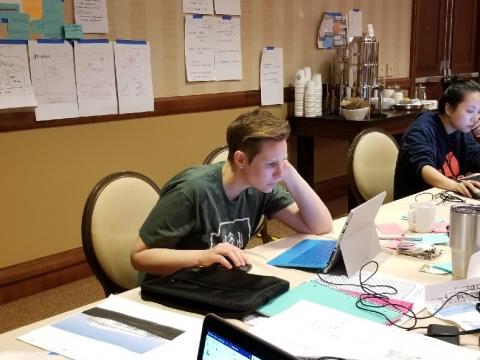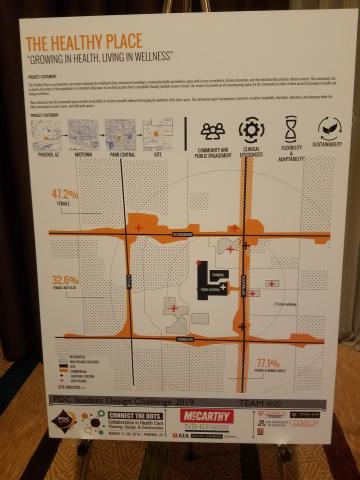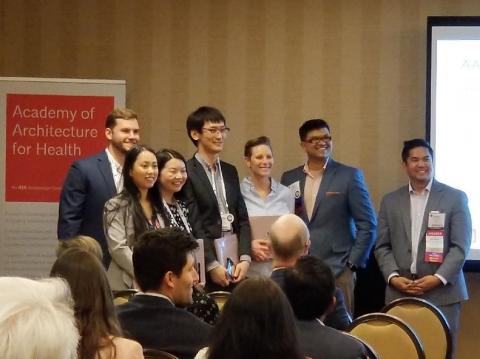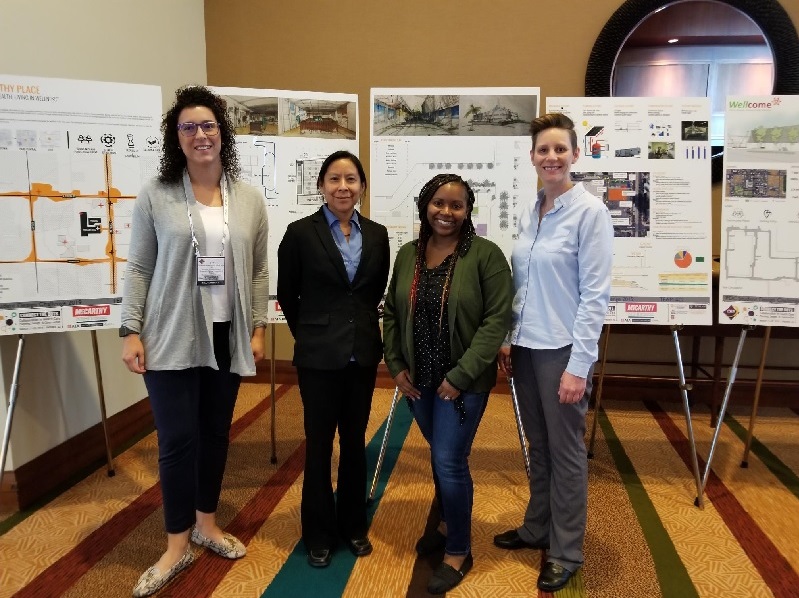UA Nursing Student Aces Planning & Design Student Challenge 2019
Over the weekend of March 16, four University of Arizona College of Nursing graduate students competed in the American Institute of Architects (AIA) and Academy of Architecture for Health (AAH) Planning & Design Challenge 2019. The students were assigned to teams with architecture, engineering and construction management students from three other universities. The challenge? To design a wellness community clinic in an existing vacant space in downtown Phoenix. After four days of creative strategizing, a multi-disciplinary jury announced the winning team, which included UA BSN, RN, RN-MSN Nursing Systems Leadership student, Ashley Hockins.

The AIA and AAH Planning & Design Student Challenge is an annual event created to stimulate critical inquiry, creative ideas and multi-disciplinary interaction between students and design professionals. It highlights the brilliance and innovation of our future healthcare architects, engineers and construction managers. Students joined intellectual forces to bring their creativity and ideas to this fun and evocative design brain bender.
"When we arrived to Phoenix on Friday, students and faculty familiarized themselves with the clinic location by walking the downtown Phoenix area and touring the space,” said Evangeline M. Ortiz-Dowling, PhD, RN, who served as the faculty advisor for the UA Nursing students. “We assessed structural and environmental barriers to the design of the clinic and found that entry sequence and access to daylight was a concern.”
“Our team really focused on the wellness aspect of the clinic and designed a space to go to advance your health and wellness aspect of the clinic and designed it as a aspace to go to advance your health and wellness and not merely to see a doctor," ~ Ashley Hockins, BSN, RN, RN-MSN Nursing Systems Leadership student
Dr. Dowling says that the retailization of healthcare is at the center of the PDC student challenge. The process facilitates cutting costs for both the consumers – or patients – as well as the healthcare system that serves them. One of the jobs assigned to the nursing students required them to reflect on their professional nursing experiences and design consumer experiences that are health driven, not necessarily clinically driven.
“This called for envisioning a client's visit to the wellness clinic, beyond their time with the provider,” says Dr. Dowling. “When considering the retailization of healthcare, we think about designing spaces where clients can also pick up their prescriptions, have their blood drawn, visit with specialty providers through secure video monitors, purchase health related products, sign-up for health promoting classes, and have a healthy smoothie on the way out. We are thinking in terms of tailored customer care journeys and developing stronger, sustainable, and meaningful relationships with our communities."

Winning team member Ashley Hockins was inspired by the challenge and delighted for the chance to collaborate with students from other academic disciplines. Her team project, titled ‘The Healthy Place,’ was designed to include four zones: A clinical space as well as a community space that included areas for education, hospitality and patient service areas. “Our team really focused on the wellness aspect of the clinic and designed it as a space to go to advance your health and wellness and not to merely see a doctor,” says Hockins. “Hence, our moto for the clinic was ‘Growing in health, living in wellness.’ We were required to complete four boards and perform a PowerPoint presentation in the competition.”

Design was important, but working together as a team was another highlight of the competition. “Collaboration is pivotal when thinking about healthcare space design,” says Hockins. “Each one of us appreciated the different points of views and aspects we brought to the table as individuals and at the same time we worked across disciplines in the design process making suggestions to one another which was welcoming and benefited our team in our success. During the challenge, I worked mostly with architecture students and have learned how valuable their contributions are to health outcomes. They see a space and know how to create environments for clients and staff. This has been a valuable experience. I was so happy I was able to participate."


